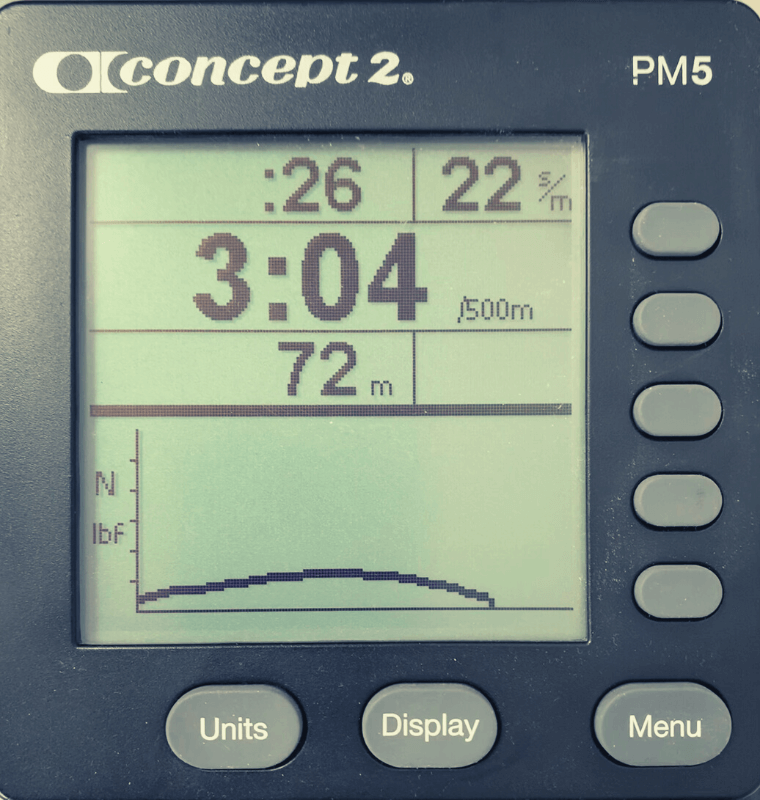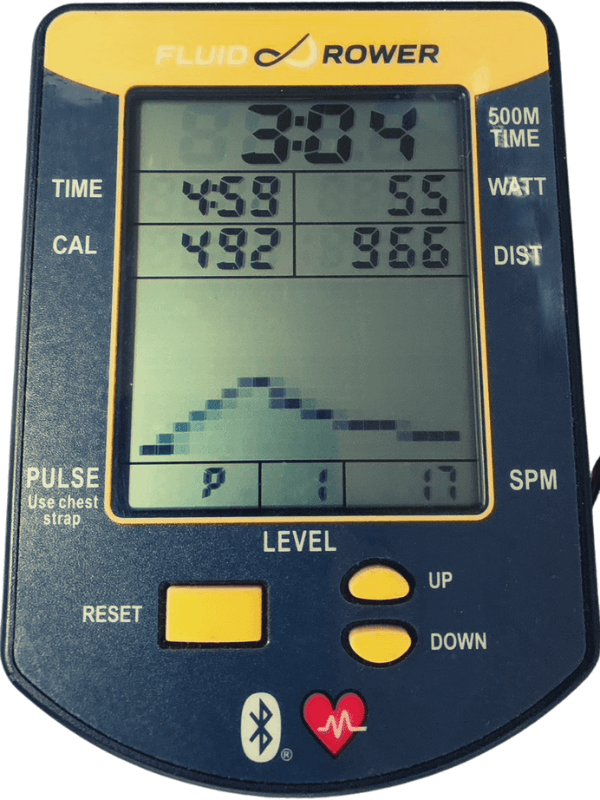Olympic Champion and Coach Eric Murray explains how he likes to think about the indoor rowing force curve in response to a comment from asensei user Troy during the post-workout debrief of the PHYSICS! livestream. Eric has previously told us that he used the force curve feature on the rowing machine pretty religiously when training on the indoor rowing machine in preparation for the Olympics and in this piece he share more insights.
The asensei youtube channel features FREE livestream workouts from coach Eric Murray every week which are packed with insights and tips from one of rowing's all-time greats. In the Coaching Gold series we highlight some of Eric's tips and insights from his Q&A sessions at the end of each workout - this time we focus on the force curve.
What Is the Force Curve in Rowing?
The force curve is a graphical representation of how you apply force during the rowing stroke and is often used to help improve technique. Generally the aim is for a smooth curve absent any grossly jagged parts which can signify areas where your rowing stroke is non-optimal.
When is it appropriate to use the force curve?
The rowing stroke is ideal when it's a smooth continuous motion but since it's a complex motion where you transition from legs -> body -> arms and back from arms -> body -> legs there is plenty of scope for loss of smoothness. A force curve is one way to visualize your stroke and
You don't have to use the force curve religiously, but throwing it in during the odd piece is a great tool to check your rhythm and your form.
If it's your first time looking a force curves you probably don't want too many other distractions so a steady state, low-moderate stroke rate session would be a good place to start to understand your stroke.
Over time you may turn on the force curve in different sessions to see how your stroke responds under different circumstances - at higher rates or under race conditions for example.
What should a rowing force curve look like?
Ideally we want the force curve to be smooth and even, however if it's a little bit front ended or a little bit back ended, it's not the end of the world, but watch out for jagged parts which generally mean your rowing technique might be a bit out of sequence. We're trying to avoid blips that tend to occur at points in the rowing stroke where you transition from one phase to another such as when you push the legs then introduce the body.
Olympic Champion Eric Murray's advice is that that your force curve is not always going to look perfect and it's not always going to look smooth, so don't get hung up on it, but the smoother the curve the smoother your stroke. A smooth force curve means you are using your energy the right way, so it's going to mean you are more efficient overall which ultimately means you will be able to maintain your pace for longer. So if you are going to do a 2k test on your erg, if you've got a jagged curve going on it might mean when you get to the last 600m you might already be cooked, but if you are nice and smooth you might only hit that with 300m (or less!) to go, meaning you gain a few seconds and that's really what this is all about.

Concept 2 PM5 showing a fairly smooth force curve
A smooth curve means relaxation and relaxation means speed. Try and get the flywheel moving in one continuous motion.
So Eric's key advice: first and foremost concentrate on making your curve nice and smooth.
Troy, with your smooth curve you're right on track!
Watch Eric explain in his own words in the excerpt below (3mins):
Eric Murray talks about the use of the force curve in rowing
Which Rowing Machines Can Display Force Curves?
Force curves can be seen on the Concept 2 rowing machine. You may need to press the DISPLAY button a few times before the force curve appears on your monitor - it will look like a set of graphical axes on the lower half of the screen.
A standard WaterRower S4 monitor does not give you a force curve option, however if you have the SmartRow enhancement then you are able to view a force curve via the SmartRow app.
FluidRowers show a simple force curve on their Bluetooth equipped monitors so you can get a sense of the smoothness of your rowing stroke.

FluidRower Bluetooth console, showing a not-so-smooth force curve
DOWNLOAD ASENSEI TODAY
|
asensei is FREE to download and with no commitment you can trial the first 3 workouts in the (RE)COMMIT program and also workouts from MASTER THE BASICS, (RE)FOCUS, SWEAT FACTORY and BE A DARK HORSE. All you need is an iPhone and access to an asensei Compatible rowing machine from Concept 2, WaterRower or FluidRower with a bluetooth capable monitor |
The asensei app tracks your force curve information, but right now the only way to view it is via the Concept 2 PM5 monitor during a workout as explained in the video above. On other rowing machines without force curves, such as WaterRower you may need to listen to the coaching cues in the asensei app and rely on feel to improve, or you can book personal video coaching sessions with Eric via support@asensei.com.




